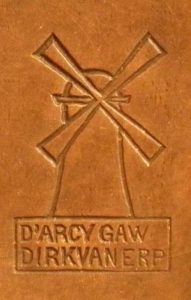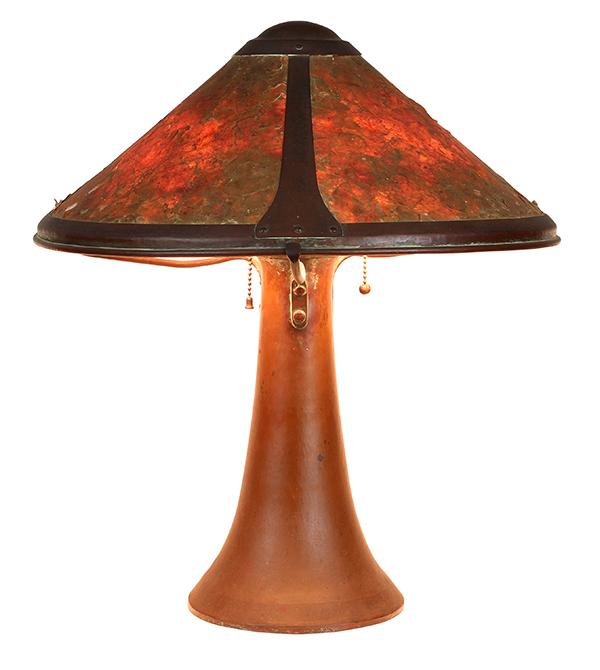A Modern Style for a Modern San Francisco
As many collectors and scholars are aware, the Arts and Crafts Movement began as a revolt against the Age of Industry, and the movements core was to embrace honest, hand made furniture and decorative art. It was the first ‘Modern’ furniture movement in America. The designs were a stark contrast to Victorian America. In this short essay I would like to spotlight just a few of the many bay area artists and craftsmen that contributed to this great California Style.
April 18, 1906, Victorian San Francisco came to an end. The Great Fire and Earthquake destroyed much of the Bay Area. Artists, craftsmen, and many of the residents of the area lost everything. Many fine works of art, furniture, decorative art, and important homes were lost in the great conflagration.
The San Francisco bay area needed to rebuild. Often referred to as “The Paris of the West” the residents were determined to rebuild bigger, better, and even more world class than the Gilded Era Victorian city that was destroyed.
Arthur and Lucia Mathews were artists in San Francisco and strong advocates for Arts and Crafts principles. The husband and wife team had many high level patrons prior to the earthquake and fire. After the fire, their clients looked to them to design the new interiors.
Arthur F. Mathews (1860–1945) was an American Tonalist painter who was one of the founders of the American Arts and Crafts Movement. Trained as an architect and artist, he and his wife Lucia Kleinhans Mathews had a significant effect on the evolution of Californian art in the late 19th and early 20th centuries. Arthur was the director of the California School of Design (Mark Hopkins Institute of Art) today the San Francisco Art Institute. His very talented list of students include Granville Redmond, Xavier Martinez, Armin Hansen, Percy Gray, Gottardo Piazzoni, Maynard Dixon and Francis McComas, just to name a few, and all were proponents of the “New Style” contributing greatly to the success of the movement.
After the earthquake and fire, he resigned from directorship of the School of Design, and instead opened The Furniture Shops. With funding from John Ziele, the Mathews’ opened a full service design studio at 1717 California St. This included Furniture, paintings, textiles, and all one would need to furnish and decorate their new house in a tasteful new style.
Thomas McGlynn, also a student of Mathews was one of the furniture designers. All of the painted furniture and decorative art was executed by Lucia Mathews. Below are images of the furniture and art produced by the very talented couple and their firm.
Dirk Koperlager van Erp (1860 – 1933) was a Dutch American artisan, coppersmith and metalsmith who had his studio in Oakland, then in San Francisco and was a very talented craftsman who brought very forward lighting and decorative art executed in copper to the bay area.
In 1908, Van Erp opened the Art Copper Shop in Oakland, and began exhibiting his work at local Arts and Crafts exhibitions. In 1909, he exhibited more than two dozen pieces at the Alaska-Yukon-Pacific Exposition, a World’s Fair held in Seattle, Washington. His shop won a gold medal.
In September 1909 Dirk van Erp entered into a partnership with D’Arcy Gaw, (1860 – 1933) who had attended the Art Institute of Chicago. She had also studied English Arts and Crafts in London at the Guild and School of Handicraft, founded by Charles Robert Ashbee.
They opened a studio at 376 Sutter Street, San Francisco in mid-September. From February 1910 the partnership began marking their wares with a stamped device of a windmill, with their names underneath. The partnership ceased on January 30, 1911. Although their partnership lasted less than a year, D’Arcy Gaw exerted a strong and lasting influence on van Erp’s design sensibility. He began making lamps following her designs during this period, with shades incorporating mica panels. Van Erp is most widely known for his lighting, however decorative pieces such as vases, fireplace tools, ashtrays, and ecclesiastic items were made by the firm.

D’Arcy Gaw and Dirk van Erp windmill stamp
In 1915, van Erp exhibited at the Panama-Pacific International Exposition, The San Francisco Worlds Fair that showed the world San Francisco has risen from the ashes a mere nine years after the great fire. A world class exhibition that brought to California many of the finest artists from around the globe. Proof that the San Francisco Bay Area was (and is) a world class destination bursting with a multitude of talent.
This blog is just a very small snapshot of how the Arts and Crafts Movement shaped the post ’06 San Francisco Bay Area. For further reading check out Bay Area Architects: Bernard Maybeck, Julia Morgan, Willis Polk, Ernest Coxhead, and more. Maybeck actually designed The Palace of Fine Arts for the PPIE.
If you’re interested in other areas of decorative art check out Arequipa Pottery, California Pottery and the many other potteries in the bay area flourishing post ’06. Furniture designers including Maybeck, Frederick Meyer (Founder of California School of Arts and Crafts) were also instrumental in the shaping of the new ‘Modern’ style.


